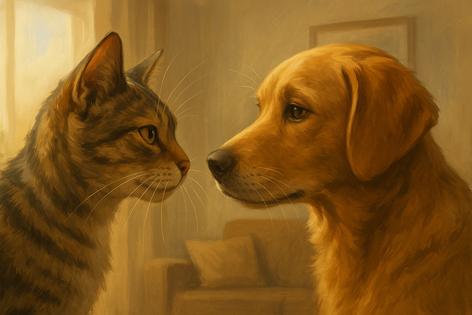The Science of Sniffing
Published in Cats & Dogs News
Humans rely on sight. Pets rely on smell. For dogs and cats, scent is not a secondary sense but the dominant way of experiencing the world. Modern research shows just how extraordinary their olfactory powers truly are.
A Nose Like No Other
Dogs possess up to 300 million scent receptors, compared to a human’s 5 million. Cats, while less celebrated, still boast roughly 200 million. The difference isn’t just quantitative. Dogs have a specialized olfactory organ called the Jacobson’s organ, which lets them detect pheromones and chemical signals invisible to us.
Dogs at Work
A dog’s nose is a lifesaving tool. Detection dogs can sniff out explosives, narcotics, and even illnesses. Research has shown dogs can detect cancer and diabetes through volatile compounds in human breath or sweat. Disaster response teams rely on canines to locate survivors after earthquakes, while hospitals have begun exploring medical alert dogs for patients with seizures or low blood sugar.
Cats’ Unique Strengths
Cats lean heavily on scent to navigate social relationships. Their keen pheromone sensitivity helps them mark territory and identify friend from foe. Domestic cats rub against people and objects to leave scent markers, creating a familiar comfort zone. Veterinarians increasingly use pheromone diffusers to reduce stress in clinic environments, imitating the scent signals cats produce naturally.
The Neurological Link
In both species, the olfactory system is tied directly to the limbic system—the brain’s emotional center. That’s why smells can trigger powerful emotions and memories. For pets, a single whiff of a favorite person or another animal is enough to change mood instantly.
Smell as Enrichment
Recognizing this power has led trainers to encourage “sniff walks” for dogs, where the goal isn’t distance but exploration. Cats can benefit from scent enrichment indoors, whether through puzzle feeders, new herbs, or safe exposure to outdoor smells.
For animals, sniffing isn’t wasted time—it’s the main event. And understanding that helps humans see the world from their pets’ point of view.
========
This article was written, in part, utilizing AI tools.









Comments